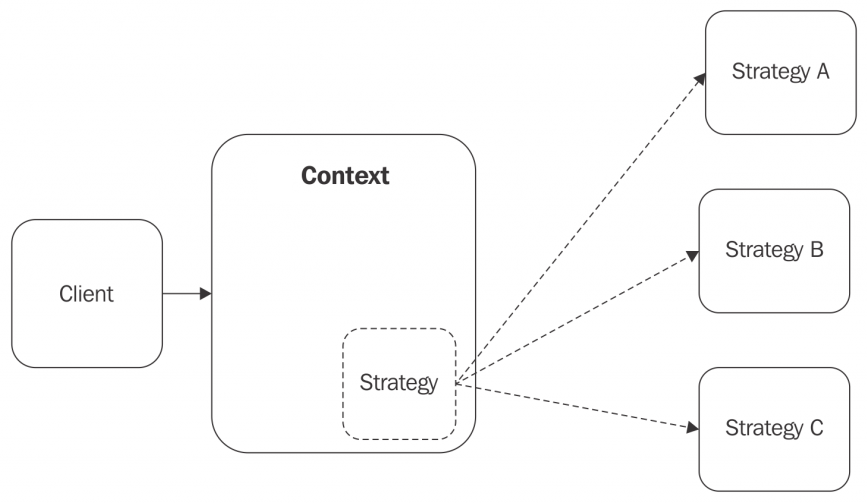#node.js #Behavioral_Design_Pattern
A design pattern is a reusable solution to a recurring problem. The term is really broad in its definition and can span multiple domains of an application. However, the term is often associated with a well-known set of object-oriented patterns that were popularized in the 90s by the book, Design Patterns: Elements of Reusable Object- Oriented Software, Pearson Education, by the almost legendary Gang of Four (GoF): Erich Gamma, Richard Helm, Ralph Johnson, and John Vlissides.
Types of Behavioral Design Patterns
- The Strategy pattern allows us to extract the common parts of a family of closely related components into a component called the context and allows us to define strategy objects that the context can use to implement specific behaviors.
- The State pattern is a variation of the Strategy pattern where the strategies are used to model the behavior of a component when under different states.
- The Template pattern, instead, can be considered the “static” version of the Strategy pattern, where the different specific behaviors are implemented as subclasses of the template class, which models the common parts of the algorithm.
- The Iterator pattern provides us with a common interface to iterate over a collection. It has now become a core pattern in Node.js. JavaScript offers native support for the pattern (with the iterator and iterable protocols). Iterators can be used as an alternative to complex async iteration patterns and even to Node.js streams.
- The Middleware pattern allows us to define a modular chain of processing steps. This is a very distinctive pattern born from within the Node.js ecosystem. It can be used to preprocess and postprocess data and requests.
- The Command pattern materializes the information required to execute a routine, allowing such information to be easily transferred, stored, and processed.
The Strategy Pattern


